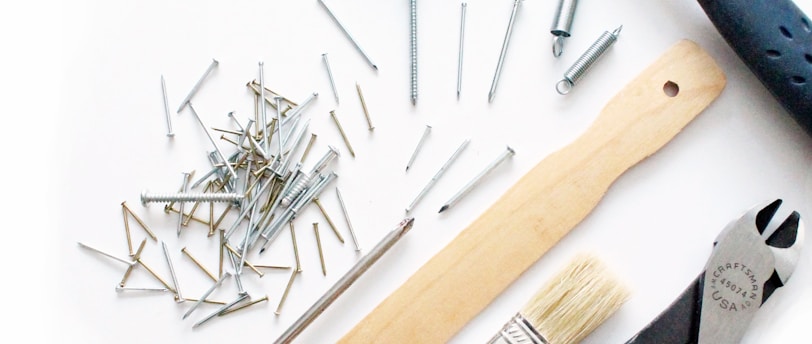Your tiny home repair station (that actually gets used)
The Circular Home #7
10/20/20252 min read


A wobbly chair, a drawer that bites, the toy that needs one small screw, and suddenly you’re hunting for a screwdriver at the bottom of a mystery drawer. That’s how little fixes turn into big procrastinations, and “replace” starts whispering. A home repair station ends the scavenger hunt: one compact spot, stocked and ready, where five-minute fixes actually take five minutes.
Why a dedicated station saves money (and patience)
Repairs fail not for lack of skill but because of friction — tools are scattered, parts are missing, no flat surface to work on. Centralizing tools and consumables cuts replacement costs, shrinks landfill guilt, and teaches kids that things can be maintained, not just bought again. Search less, fix more.
The real-world 12-tool kit (parents’ edition)
Screwdrivers: #2 Phillips, flathead, plus a precision set for toys/glasses.
Pliers: standard + needle-nose; add a small wire cutter.
Adjustable wrench + Allen (hex) key set.
Hammer (with a soft mallet head if you can).
Tape measure + torpedo level.
Utility knife with extra blades.
Small drill/driver (optional but golden).
Consumables: mixed screws and wall plugs, picture hooks, felt pads, wood glue + gel superglue, electrical tape, duct tape, zip ties, sandpaper (120/220), silicone oil, spare batteries, self-adhesive bumpers.
Set it up so tired-you will use it
Location: a standing-height shelf or narrow cabinet near the kitchen/utility room.
Visibility: clear bins labeled “drivers,” “pliers,” “hanging,” “glues,” “batteries.”
Work mat: an A4 cutting mat + magnetic parts tray so screws stop running away.
Triage tray: one small bin labeled “fix me.” Anything broken lands here first.
A simple workflow that wins
Drop the problem in the triage tray with a sticky: “Something's wrong.”
Timer: set 15 minutes; perfection is banned.
Diagnose → Decide: fix now, order a part, or retire the item.
Parts note: keep a running list in your phone (“AA batteries, M4 screws”).
72-hour rule: if a repair needs a part or tool you don’t own, either order now or let the item go—no purgatory piles.
Kid-safe, always
Lock blades high, unplug tools, add safety glasses, and light work gloves. If kids watch, give them a job: “count the screws,” “hold the flashlight.” Curiosity tamed becomes competence.
Maintenance beats heroics
Once a month: oil squeaky hinges, tighten handles, check loose chair legs, sharpen scissors. Ten minutes of routine prevents expensive “surprises.” You don’t need a workshop to keep a home running; you need one small island of order and a timer. When fixes have a place to happen, replacement loses its grip, and so does clutter.
Next gentle step: Clear one shelf, lay a work mat, and stock five essentials (Phillips, flathead, pliers, tape measure, mixed screws). Add a “fix me” tray and run your first 15-minute session tonight.
Connect
Join our community of mindful parents and receive exclusive tips, guides, and resources on minimalism and sustainable living. Subscribe Now.
info@inharmonywithless.com
© 2025. All rights reserved.
